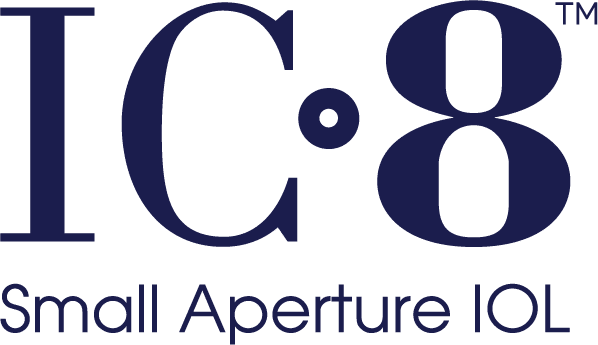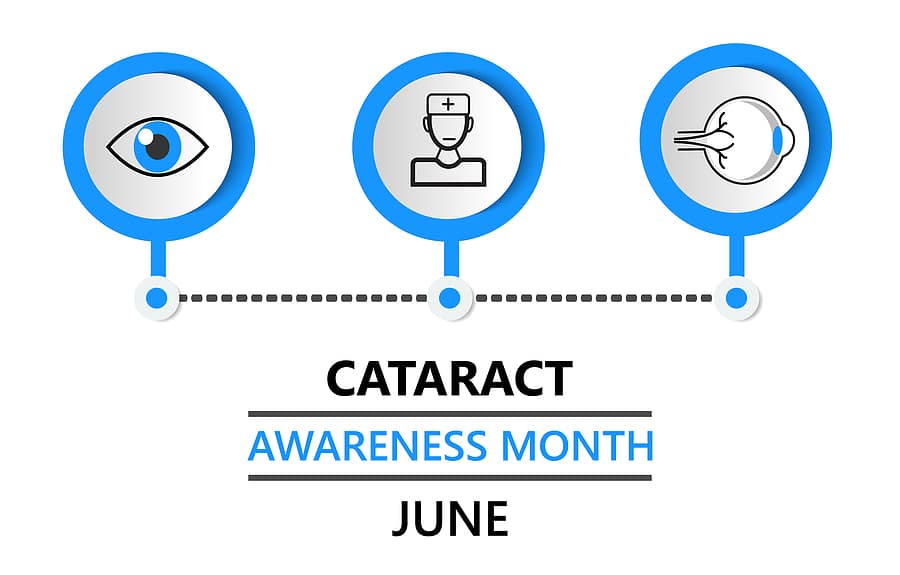June is Cataract Awareness Month. Cataracts are the leading cause of blindness in the world. Millions of people around the world suffer from vision impairment due to cataracts, though it is an eye disease that can usually be treated successfully with cataract surgery.
Cataract surgery is performed to remove the eye’s natural lens that has become clouded with a cataract. The lens is then replaced with an artificial lens known as an intraocular lens, or IOL. There are different kinds of IOLs. Here, we identify the various types of intraocular lenses and explain what makes them different.
Intraocular Lens Technology
An IOL is a synthetic, artificial lens that replaces the eye’s natural lens and provides the focusing power needed to see clearly at various distances. IOLs are made of silicone, acrylic, or other plastics. Many also include materials that help protect the eyes from the sun’s harmful UV rays. The main types of IOLs are known as monofocal, multifocal, extended depth of focus (EDF), accommodating, and toric IOLs.
Monofocal IOL
Sometimes called a traditional IOL, a monofocal IOL is the most common type of replacement lens. It offers clear vision, but at one distance only – near, intermediate, or far vision. Most people have their monofocal IOLs set for distance vision and use reading glasses for tasks that require clear near vision. One main advantage of a monofocal IOL is that it is usually covered by Medicare or other health insurance plans. While a monofocal IOL can be cost effective, most people who choose a monofocal IOL will still need to wear glasses, at least some of the time, for example, when reading or working on a computer.
Multifocal IOL
A multifocal IOLs, similar to multifocal glasses, offers clear vision at two or more distances. There are two types of multifocal IOLs: bifocal IOLs and trifocal IOLs. Bifocals offer far and intermediate or near vision at specific distances, at the same time. Trifocals offer vision at three distinct distances: near, intermediate, and far. The goal of these lenses is to reduce the need for glasses or contact lenses. However, multifocal IOLs can also create problems with night vision, such as glare and/or halos around lights. They may also decrease the sharpness of your vision compared to a monofocal lens.
Accommodating IOL
Accommodating IOLs are designed to mimic the natural focusing process of the eye. These lenses provide far vision and may change focus, enabling you to see up close (near). You may still need reading glasses to see fine details and small print.
Extended Depth of Focus IOL (EDF)
Extended depth of focus (EDF) IOLs are the newest type of IOL. Unlike multifocal IOLs which provide clear vision at two or more specific distances, EDF lenses are designed to provide a continuous range of clear vision, from near to far.
Toric IOL
A toric IOL is designed to correct the refractive error caused by a cornea with an oval shape due to astigmatism. Like the other types of IOLs, there is a chance you may still need glasses for far, intermediate, and/or near vision.
How do I know which IOL to choose?
There are many factors to contemplate when choosing an IOL. Lifestyle, visual needs, and cost are considerations. Your eye surgeon will be able to discuss the advantages and disadvantages of various IOLs and help you choose the one that best suits your needs and preferences.
References:
http://www.allaboutvision.com/conditions/iols.htm
https://www.aao.org/eye-health/diseases/cataracts-iol-implants
http://www.who.int/en/news-room/fact-sheets/detail/blindness-and-visual-impairment
https://europe.ophthalmologytimes.com/view/are-extended-depth-focus-iols-hitting-visual-sweet-spot



